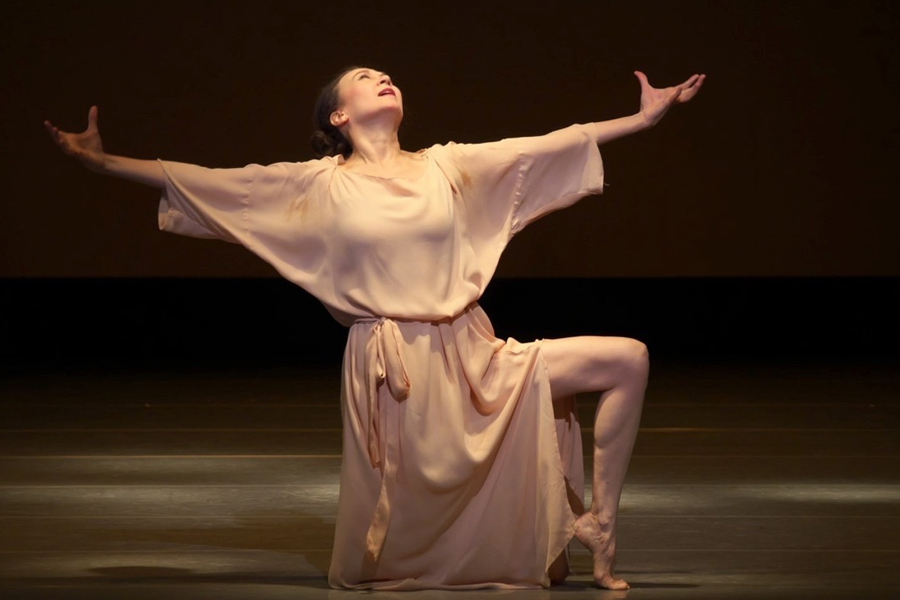
Mary Sano has spent the past 20 years teaching the movements and philosophy of dance of Isadora Duncan, who turned away from the traditions and expectations of formal ballet for an approach rooted in nature and the spirit of the Greek Revival era. She and her students present Dancing Dreaming Isadora: Reflections on the Past, Visions of the Future at ODC Theatre tonight and tomorrow.
There’s more information about the performances at Mary Sano’s website.
“It’s really generational work,” Sano says, “and I have learned all these dances of Isadora from Mignon Garland, who was a second generation Duncan dancer, and she has learned from two of Isadora’s adopted daughters.” The tradition of passing the movement down from one generation to the next is necessary, since there’s only the briefest bit of footage of Duncan dancing. But her daughters, known as the ‘Isadorables,’ passed along the steps to extend her influence past her death in 1927 at the age of 50. Mignon Garland founded the Isadora Duncan Heritage Society in San Francisco, at the location of the house where she lived as a child, before moving to Europe and Russia. Sano was looking to change her life, and took a dance workshop there. “I just happened to be visiting San Francisco. I was really looking for something very spiritual and soulful in a way, because I was living in a fast-paced life in Tokyo… I was really trying to express music, and this moment of joy or the sadness, or all that. So it was really almost like a drama with dance. That’s how I felt when I took this workshop for the first time. That was in 1979.” She says the dances are philosophical and spiritual: “There are basic dances, which Mignon taught me. But technique of Isadora Duncan, the Duncan dancing, is really try to put yourself in the rhythm of this music, and rhythm of this universe surrounding you. To really express soul of yourself. All this wonderful positive energy comes into you, and then you are able to share that with the audience, or whoever’s watching, or for yourself.”
There are different programs each night, both with dances originally by Isadora Duncan, as well as her own choreography inspired by Duncan in the second half.







